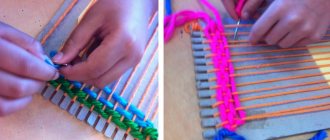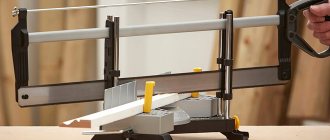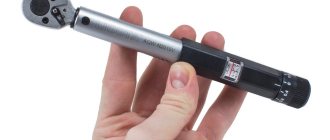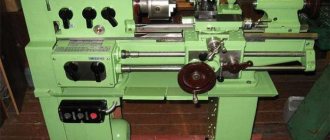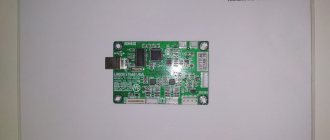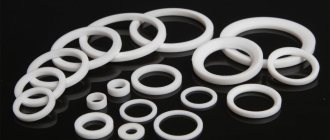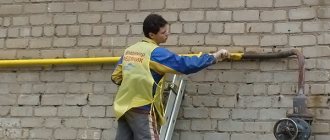We wear clothes and use other textile products, but sometimes we don’t think about the process of creating them. They are made from materials for the production of which a weaving machine is used. This device has been used for several thousand years and has its own history and characteristics.
What is a loom?
It represents the equipment needed in the textile industry. A weaving loom is a device on which fabrics of different textures and compositions are produced - cotton, wool, silk, linen and other fabrics. These can be woven, smooth, pile materials used for the manufacture of clothing, household textiles, carpets and other products. Another name for such a device is krosna.
Weaving loom device
The design has a number of features due to its functionality. The weaving mill has the following design:
- Its main parts are healds - the working part in the form of moving frames.
- These elements are fixed using wire pins.
- The device is equipped with a holder for attaching threads.
- The parting hook is responsible for threading the loops with the device.
- With the help of embedded strips, the smoothness and evenness of the woven bases are maintained.
How does a loom work?
The principle of its operation is simple. Whether a home loom or an industrial one is used, the algorithm for its operation is as follows:
- Threads are threaded through the eyes of the healds.
- When the first frame is raised, the even threads are raised, and the odd ones are at the bottom.
- Between their rows a shuttle is thrown, in which there is a bobbin with a transverse thread (weft). It unwinds and then lies between the threads of a woven base consisting of longitudinal threads.
- After moving the shuttle, the first raised bar returns to its place.
- When a transverse thread is woven into a warp consisting of longitudinal threads, it is tightly fixed to the latter by means of a metal comb. This is how a loom equipped with a reed works.
- The next step is to raise the second heddle to move the odd threads over the even ones. The transverse fibers are laid on the longitudinal ones by throwing the shuttle in the opposite direction.
- Odd warp threads are covered by even ones due to the fact that the heald is lowered.
- The fiber is nailed with a metal comb.
Assembly
Where you will assemble this structure, there should be a large space with a span of more than 4 m. We place crosses in the middle of the room, one on the ceiling, the other on the floor. The base of the structure is inserted into the crosspieces. Sticks with a diameter of 6 cm are inserted into the holes. It should look horizontal with an intersection. The next step will be to fasten the following parts, only in a vertical position.
Spring Fashion: 5 Ways to Wear Warming Cinnamon
The assembly of the structure is ready for work.
Loom - history
People learned to weave mats from reeds and tree branches, after which they mastered a similar technique using fibers. Important points in the history of the development of the device:
- The first loom was a vertical one, and it was invented in 1550 BC. e. It was a primitive device on which longitudinal threads hung on one side and transverse threads on the other. Weaving took a lot of time and effort.
- In 1733, John Kane, an English clothier, invented a mechanical shuttle. The weaving machine was equipped with it for throwing threads. Thanks to this invention, labor and time costs for the production of canvases were reduced, and it became possible to produce them in large quantities.
- In 1785, Edmund Cartwright patented a foot-operated machine tool. The device was refined by other inventors and was improved by the 30s of the 19th century.
- In 1879, Werner von Siemens created an electrical device.
- In 1896, the automatic loom was introduced. Modern devices are descendants of this device.
Types of looms
There are several classifications of the device. In accordance with the principle of operation of the mechanism, it is divided into the following types:
- handloom;
- mechanical;
- semi-mechanical;
- automated.
Depending on the method of laying the thread, the device can be:
- pneumatic;
- hydraulic;
- foil
Air loom
This type of device is used for the production of materials from yarn and chemical complex fibers. A modern pneumatic weaving loom has the following feature - the transverse thread is pulled into the shed using the pressure force of compressed air, which is supplied through pipelines from the compressor. This type of device is used for the production of simple weave fabrics with a surface density of maximum 200 g/sq.m.
Hydraulic loom
This type of device is used for the manufacture of synthetic materials that are not wetted by water. This weaving machine has a design that involves drawing the thread through a drip jet of water. The latter is ejected from the nozzle under pressure. The speed of laying the transverse thread on such a device can reach 35 m/sec.
Rapier loom
This type of device is used for the production of both synthetic and natural fabrics. With its help, technically filtered and mixed gray fabrics are produced. You can use a rapier loom for rugs and other items with a rough texture. On this device, the transverse thread is pulled into the shed by means of grippers that are fixed at the ends of rapiers (flexible metal strips) that perform reciprocating movements.
Flax grower's dictionary. Weaving
WEAVING
Weaving is the production of fabric on a weaving mill.
The following subgroups are distinguished in the vocabulary of weaving: 1) The weaving mill and its parts, 2) actions in the weaving process, 3) errors and interference in the weaving process, 4) words denoting the weaver.
1. Weaving mill and its parts
Loom. Fig.Navalikhina Yu.A
Common names
● CROSS HARNESS . All parts of the home weaving mill. Everywhere. = The broken harness is thrown onto the ceiling. Mant. Bread. ● FOR-[s. 60:]WATER. = This plant is no longer needed; ready-made manufactures are enough. Mant. I know. ● TOOL E NT. = My sister-in-law left me all the tools, but I won’t weave. Mant. Eph. ● PRIP A S. = The Krosens have a lot of stuff in store. Mant. Us. ● SBR U YA = I wish I could burn all my harness, but she sells it. Inter. Genus. ● BECOME A HARROW. = Dead harness is a beam, stuffing, seams and other items. Poppy. Il.
● STAN (see picture). Home weaving loom. Everywhere. = I have a well-preserved figure, a look from my father. Inter. Alesh. I’ve heard the following proverb: “Only place your legs on a ready-made body.” Poppy. Mark. We had a camp from Kopan, Koronovik. Mant. Myself. Previously, they put little ones behind the camp; they didn’t even grab their legs to the footrests. Mant. Phat. ● SLEEP , plural. = Krosna was completely shaken. Poppy. Il. You’ll sit all day at the krosnam, you’ll be so busy eating it that you’ll fall asleep without your hind legs. Mant. Us. ♦ Arrange, gather, set up camp, crown. Assemble the weaving mill with all its parts for stretching the warp on it and working behind it. = After Maslenitsa, weaving mills were set up in the huts. Poppy. Shem. Two or even more crowns were placed in one house. Mant. Eph. If they had said earlier, I would have collected the camp for you. Mant. Ugh. From the barn we will bring two frames, a beam, a seam, and pins and we will set up the camp. Mant. Eliz. Our father helped set up the roof. Mant. Myself. // ♦ Arrange the camp, cross. Expand the weaving mill to produce a wide panel (see) of fabric. = They set up the camp and wove carpets for mattresses. Inter. Genus. The crosses were set up - the seam and beam were mined. Poppy. Nick.
● UB O R. Weaving mill in working condition: with a warp stretched on it and part of the woven canvas. Everywhere. = There were two utensils in our house. Poppy. Nick.
Types of weaving mills
● KOREN O VY STAN. A weaving mill, the frame of which (beds) is made from a part of a tree with roots. Everywhere. = Korenov’s camp is standing strong, it’s not moving forward anymore. Mant. I know.
● CHIPPED MILL. A weaving mill, the frame of which (bed) is made of separate parts. = In our village, the camps were more sloping than root-growing. Mant. Myself.
Weaving Mill Parts
●BURDO. An oblong rectangular frame with frequent parallel teeth plates vertically located inside it. The warp threads are threaded into the reed; together with the stuffing, it serves to nail the weft. Birds vary in number [p. 61:] skeins, from 6 to 12, and have their own names (see below). Everywhere. = Berdeniks came to the village with reeds, let’s buy reeds from them, tighten the teeth and tie them in skeins. Mant. Shul. ♦ Thread the warp into the reed . Thread the warp threads into the reed. One weaver coped with this or someone from the household helped her: he handed her threads from behind the threads, she took them at the seam with a chisel (see) - a stick with a notch at the end. = The Khovsts thread two threads per tooth into the reed, one weaver feeds the loop from her hand, the other takes the threads onto the tooth. It happens that one will fit into the reed. Poppy. Eph. ♦ Let down, pull up, knock down, birdie. Tighten the warp with the weft when weaving a thin fabric and thereby complicate the work of the reed and narrow it. = When you weave thin, you put a spreader on it, otherwise you can pull off the hems with the weft and let the bird down, even break your teeth. Mant. Myself. I ruined such and such a bird, pulled it up! Mant. Us. If you are weaving, be careful not to tighten the edges of the khovst, otherwise you will knock off the reed. Poppy. Un. Without spurs on the stitch, when weaving Tonkov Khovsta, the reed is brought together. Mant. Shul.
▲ Weave in all reeds. There is a lot to learn, experience, experience in life. = A robotic person understands everything: we hit all the birdies. Mant. Gus.
Varieties of bird by number of skeins
● SIX U HA. Reed for 6 warp skeins (180 teeth). = Thick khovst was woven into poles for bags, rugs, and various bed sheets. Mant. Shul., Eph., Znam., Mos., Sam., Us., Fat., Khlab., Poppy. Gen., Sol., Un. ● SIXTER AND K. Col. V.-Pol., Zapr., Mant. Eliz., Med., Inter. Petr., Rod., Sol., Cher. ● SIX YORKA . Poppy. High, Gentle, Mant. Gus., Znam., Med., Mos., Fat. ● SIX U HA. Poppy. Star.
● SEM U HA. Reed for 7 skeins (210 teeth). = Semukha is an onush bird. Mant. Myself. Ter. litters see Shestukha. ● SEMER AND K. Ter. litters see six. ● SEM YORKA . Ter. litters see six. ● SEM AND ON. Inter. Sol.
● EIGHT U HA. Reed for 8 warp skeins (240 teeth). = Eight is the widest reed; rugs were woven into it in eight chains. Mant. Us. Ter. litters see Shestukha. ● EIGHT AND K. – How many comb yarns are woven into an octagon. Inter. Sol. Ter. litters see Shesterik. ● EIGHT YORKA . Ter. litters see Six.
● DEV I TNYA. Reed for 9 warp skeins (270 teeth). = In the nineteenth century they wove non-tovty khovsts from threaded yarn. Poppy. Nik., Eph., Nezh., Un., Mant. Eph., Med., Pod., Sam., Us., Bread. ● NINE AND K. Ter. litters see Shesterik. ● NINE. Ter. litters see Six.
DES I TNYA. Reed for 10 warp skeins (300 teeth). = In ten days they collected thin khovsts. Mant. Shul. Ter. litters see Nine. [With. 62:] ● TEN AND K. Ter. litters see Shesterik. ● DES I TKA. Ter. litters see Six. ● DES I TNIK. Col. V.-Pol.
● OD AND NNADCATERIC. Reed for 11 skeins (330 teeth). Everywhere. Fabrics were woven into eleven-tseterik. Mant. Bread.
● DVEN A DZATERIK. Reed for 12 warp skeins (360 teeth), used for making the thinnest fabric. Everywhere. = The twelve is a narrow reed; towels were woven into it. Mant. Honey. ● DOUBLE AND K. = Double - a canvas reed, threaded into its finest yarn. Mant. Phat. The double was woven into a thin novelty for sundresses. Mant. Il. We don't do much double-weaving. Mant. Shul.
Varieties of bird by production and quality
● KAM Y W. A reed with teeth made of reeds (11-12 skeins), used for making the thinnest fabric. = Thin cloth was woven into reeds for bandages. Mant. Us. ● RESED ABOUT VOYE BERD. = A reed bird with thin, smooth teeth is easy to handle. Mant. Us.
● THE DOG AND THE FUCKING BERDO. Reed with unsmooth, rough teeth. = The doggy bird moshes the threads and is so strict, it pulls off the patches and can break the thread. Mant. Us. Leodorova A.I., born in 1907.
● SAT AND CURRENT. A reed that has been reworked and narrowed from long use. = They will knock down, pull up the birdie after many years of work - and it will be knocked down. Mant. Bread. In the same birdo double, only knocked down, we wove towels. Mant. Shul.
● KHODKOYE B YORDO . Easy to use reed. Everywhere. = Berdeniks came to the village, and so I run, choose a popular bird, check my teeth with my finger. Mant. Myself. ● V O DKOE B Y RDO. = Vodka will be like a bird if you grease its teeth with vegetable oil. Mant. Eph.
● V E CATS, plural. Wooden blocks in a weaving mill that raise and lower the warp threads. There are one-wheeled and two-wheeled eyelids. Everywhere. = Some with eyelids, and some with simple ropes, on extinguishers, weaving, the ropes run well, but they quickly fray. Mant. Under. ● V E KUSHKI, plural. Mant. Under. ● V E KSHY, pl. = Vekshi gave the girls to play. Mant. Shul. ● V E KSHINKI. pl. Col., Int.
● V E RHNITSA. The top of the weaving mill: bars mounted on the rear posts of the beds. = We put pads on the top and hang stuffing with reed and threads. Mant. Eph., Mant. Znam., Mos., Sam., Us., Khlab., Shul. ● KL Y SHKI, pl. = The clubs at the camp are like shoulders, they are supported by padding and grips. Inter. Sol., Rod., Coward.
● DOT Y KALNIK. A device for the beam of a weaving mill in the form of [p. 63:] sliding frame for finishing (tying) the base. = The end of the warp will be attached to the dot and weaved. Mant. Us., Mant., Col., Inter. ● DOTYK ALNIK . Poppy. Higher, Il., Nezh., Un., Shem. ● DOT Y KI, plural. Poppy. Star. ● SP U SKI, pl. = In Kovo there are no descents; in those, someone holds the end of the base when touching, - “he goes to matchmakers.” Poppy. High., Eph., Sol.
NAB AND LKI, pl. Part of the home weaving mill is a wooden frame into which the reed is inserted; the fillers with the reed are used for nailing the weft. Everywhere. = You’re sitting behind the camp, you’re slapping the stuffing, and if a small window passes by, you’re going to slam it. Mant. Mos. ● B I LA, plural. = Bilam is used to nail the wefts when weaving. Mant. Eliz. ● NASHBOARD . Poppy. Tender. ● P I LA, plural. Poppy. Tender.
Parts of the stuffing: beds , a reed is inserted into them, the upper bed is movable, it is put on the butchers (needles, needle beds), the side slats of the stuffing, by which they are suspended from the top of the frame. = We put the reed into the beds of stuffing and hang it to the top by the butcher's horn. Mant. Ugh.
● NAV O Y. The rear shaft of the weaving mill on which the warp is wound. Parts of the beam: a) at the end of the beam to the left of the weaver there is a head with holes for the bow (see); b) at the other end - circles in the form of wheels, limiting the bed, supporting the beam and giving stability to the entire camp; a recess along the entire length of the shaft , into which a rod (see) is placed with the warp yarn put on it. ♦ Wind the warp onto the beam . Place the base on the beam. They do this in this order. First, the end of the warp is straightened out in width, two boards are threaded between its rows (see) and the yarn is threaded into the reed (two threads per tooth), after which the end of the warp is secured to the beam. Then part of the wattle warp is unraveled and secured on a roller (see), which the winder takes under her knees and, by turning the clamp at the beam, tightly winds part of the warp onto the beam. And so, piece by piece, gradually, slowly, the base is placed on the warp. The longer you weave, they say, the shorter the weave.
▲ Go to godparents, to godfathers, to matchmakers, to matchmakers, to a wedding. A humorous invitation to help in adding the foundation to the beam. = If you can’t put the foundation on the beam yourself, mom would shout: “Well, girls, who will go to godparents?” I have been beaten more than once: I hold tightly to the end of the fence, and my mother, under the camp, pulls me towards the beam. Mant. Mos. The neighbor smiled: “Won’t you come to my godmother’s place?” Mant. Bread. I did without “matchmakers”: I’ll tie a belt to the end of the fence and add the base alone. Poppy. Nick.
NIT, often plural. NIT S. _ The lifting part of the weaving mill is a series of thread loops connected in pairs, assembled on two parallel [p. 64:]steps; threads with warp threads threaded through them serve to form a shed (see) when weaving. Everywhere. = The warp for weaving is threaded into the threads. Inter. Genus. ● NICHELNITS , plural. = You can’t put one on in a singlet, you can put it on together. Poppy. Il. ● N I CHENITSY, plural. Inter. Peter. ● N I CHENKI, plural. = In nichenki, one thread is threaded into a bell. Poppy. Nezh., Sol., Jur. ● TEN YO TA, plural. Mant. Eph. Ivanov, born in 1916.
● TsEPK I , pl. = We called nits tsepkam in the village way. Mant. Eph. In one of them the chain was woven into bags, in eight of them it was woven into tablecloths and towels. Mant. Myself. ● CHAINS , plural. = The rugs were woven using four flails. Mant. Gus., Inter. Peter. ♦ Thread, put the warp into threads, into chains. Thread the warp threads through the stitches. = Two people thread the warp into the chains: one weaver from the prices feeds the threads one at a time from her hand, the other from the seam takes them on her finger, asks her partner: “Which pair are you giving, the top or the bottom?” Col. V.-Pol. When I was little, my mother told me: “If you put chains on me, look after your sister (the thread that is a pair for another thread), don’t put the thorns in,” but I don’t understand her and look at my sister Manka. Mant. Phat. You can’t wear one in nothing. Poppy. Il., Nezh. ♦ Threads and chains are yawning . They form a shed well in the base when weaving. = Some threads yawn lightly, others plug the threads (hold them back). Poppy. Tender. Mom, the chains are not yawning. Inter. Alesh. ♦ Nit will disappear . The loops will fray. = Iznititsya nit - we will be a new nit. Mant. Myself. ♦ Thread nit . Make a new nit. = Threads of thread on a thread board (see). Mant. Ugh.
● BELL E C. A loop in nichenki into which the warp thread is threaded on the weaving mill. Everywhere. = If you are weaving a simple khovst, thread one thread at a time into a bell. Inter. Genus. ● CELL O LCHICK. Decrease-affectionate = I missed the bell in the chains - I made it funny. Mant. Shul. ♦ Take the bell. Make a loop in the bottoms to receive the warp thread. = Take the bell from the first chain and thread the warp into its thread. Mant. Phat. Take it from the first tsepka, then from the evo zho. Mant. Us. In the last example, the word bell is omitted, and this often happens in the speech of weavers. ♦ String the bell . Make a row of additional loops or instead of broken loops. = If you put a barb in the chains (see) - you have to string the bell additionally. Poppy. Nick. If the bell breaks, you put a new one on it. Mant. I know. ♦ The bell will be wrapped . Only the colors in the nichenki will tear or fray. = When the bell is tied, the warp thread will go along the top and will be close to the fabric. Inter. Sol. ♦ Not in the bell . By mistake, the warp thread was not threaded through the threads. = The warp thread will not go along the top in a bell, but on the fabric it will be close, like a ritska. Mant. I know.
● SUPPORTS , pl. Two or several (up to narrow planks, assembled on a rod and tied to the threads of the weaving mill. With the help of the footrests, the mill is set in motion, forming a shed at the base. Everywhere. = There are up to eight footboards at the machine. Number. Req. ♦ To step through the footboard. Lower the footrest down while weaving. = If you step through the footboard, you make a shed at the base. Col. H-H. ♦ Step over, touch the footrests, walk on the footrests . Alternately lower the footrests with your feet while weaving. = What pattern you will weave, so on you will step over the steps.
Two or several (up to narrow planks, assembled on a rod and tied to the threads of the weaving mill. With the help of the footrests, the mill is set in motion, forming a shed at the base. Everywhere. = There are up to eight footboards at the machine. Number. Req. ♦ To step through the footboard. Lower the footrest down while weaving. = If you step through the footboard, you make a shed at the base. Col. H-H. ♦ Step over, touch the footrests, walk on the footrests . Alternately lower the footrests with your feet while weaving. = What pattern you will weave, so on you will step over the steps.
● HALLWAY . A device at the seam (see), with the help of which the warp on the weaving mill is kept taut. Types of restraints: 1) a long stick inserted into the hole in the head of the stitch, with emphasis on the floor or on a special ladder; 2) a gate, consisting of a narrow board with small round holes, with a rope connecting it to the camp. This board is threaded through the slot of the handle inserted into the hole in the head of the seam, and the whole thing is secured together with a stick - a clamp in the hole of the board. Local names for boards with holes: board, hole maker, chastohole ; saddle, depending on its manufacture: saddle-goose, saddle-horse, saddle-dog . Everywhere. = Many people in our village have a simple pavement. Mant. Myself. My father made me a gooseneck. Mant. Shul. In a horse harness, the leg is inserted into the head of the stitch. Mant. Mos.
● PRIT Y KALNIK. A piece of canvas with unwoven ends, with which the warp threads are connected to the seam. = The wattle fence at the prices is cut, tied in knots, put on a rod at the butt joint and all together pulled together, locked at the seam. Mant. Myself. During Lent, the stick is placed on the crust. Mant. Med., Col., Mant. ● BUTT ALENS . = Putting (see) you put it in - you cut off the end of the hovstina onto the butt. Poppy. Vysh., Il., Mark., Nik., Shem. ● STICKING FLAX . Inter. Peter. ● STITCH A SHKI, pl. Mant., Mac. N.-Mak. ● CLOSE ENDS, pl. Poppy. Tim. ● START AND CALL. Inter. Peter., Rod., Sol. ● BEGIN A FLEY. Inter. Genus. ● STITCHED END . Inter. Genus. ● PROVINGS KI , plural. Poppy. Star. ● PROSHVA. Poppy. Yak.
PR AND SHVA. The front shaft in a weaving mill on which the finished fabric is wound. The seam is strengthened in a stationary position with a clamp (see). Everywhere. = You will thread Khovstin almost to the bird itself, and you will thread it onto the seam. Mant. Bread. I've woven the stitching above the nose, it's time to cut off the tail. Mant. Myself. ● PR AND SCHWITZ. [With. 66:] Inter. Petr., Rod., Sol., Cher. ● PR AND SLITTS. Inter. Sol.
● ROCKS _ A device for winding threads onto shanks (see) for a weft - a block with two stands and an iron spindle attached to them with a wheel on the heel and a sharp opposite end on which the shank is put on: the iron spindle with a wooden block is driven with the palm of the hand. = Some on the rock, and some on the sled harness, tightened the shanks for the weft. Mant. Fat., Mant. ● SCALY . = I’ll put the tarsus from the trumpet or from the sparrow on the rock and sutsu on it. Mant. Med., Int. Rod., Sol., Mac. Nezh., Tim. ● BITCH AND LO. = They didn’t drive it with their hands, but turned the knot with a handle. Poppy. Yak.
● STAND AND ON. One of two identical symmetrically arranged parts of the weaving mill that make up its frame. Everywhere. = Let's bring the frames to the hut and we'll put them together and assemble the frame. Mant. Us. ● STANDING LEGS . Poppy. N.-Mak. ● STANDING AND ON. Mant. Mos.
● C E VKA. A wooden or birch bark tube in a rock (see), onto which a weft thread is wound. The shank is inserted into the shuttle (see) when weaving. Everywhere. = You'll wear out hundreds of shanks in a day. Mant. Myself. ♦ Knot the shanks . Wind the yarn onto the shanks. = When I was little, I loved to twiddle my shanks, I’ll knit about twenty of them and go for a walk. Mant. Myself. ♦ Roll the shanks. Poppy. Nezh., Legal, Inter. Coward.
● SHOW O K. Weaving shuttle is an oval oblong block with a thread wound inside (on the shank). Everywhere. = I had a grainy apple tree. Mant. Us. In tens of them, tares were woven into sundresses. Poppy. Nick. You rustle (move) the shank along the base and press the knots. Mant. Us. ♦ Throw, throw the shuttle. With a quick movement of your hand, send the shuttle into the shed of the warp when weaving. = The neat, slippery shank is easily thrown into the throat. Mant. Eph. With a weft thread, you throw the shank into the shed. Mant. Myself.
Ancillary parts in the weaving mill
● V E RHNITSA. The crossbar at the top of the weaving mill from which the reed stuffers and strings are hung. = There are two tops on the camp - for stuffing and for threads. Mant. Us. ● PADOZH O K. = You put two pads in the notches at the top of the frames and tie stuffing with a reed and Mant chains to them. Med., Int. Sol. ● STICK . = It happens that on one pedestal there are eyelids with threads and stuffing with a reed. Mant. Sam., Mac. Il., Eph.
● D O SKI, plural. Two thin boards of the same size, dividing the warp yarn into two layers in the weaving mill. Everywhere. = Before winding the warp onto the beam, we will insert the boards into the prices. Poppy. Nick. They thread them into chains - they sort out the prices on the boards: pairs of threads de-[p. 67:]they lay down and serve one by one to the nits. Mant. Phat. ● LOP A TKI, plural. = We will put the blades into the prices and we will lay the base on the beam. Inter. Coward. ● VKI PRICES , many. = Prices are two rather small ones, prices are put on them. Poppy. Mark., Nezh. ● PRICES AND TSY, plural. = Only have time to fold back the price tags if you wind them well on the beam. Mant. Eph., Znam., Med. ● PRICES , plural. = Prices are very valuable items, they hold the ranks of the base. Mant. Under. When weaving, you remove a little warp from the beam and push the prices back. Poppy. Il., Mant. Under., Sam., Us., Shul. ● H AND CHANGES, plural. = From the tsismenits there are two layers of base. Mant. Honey.
● Z U BIK. A special stick with notches at the ends, which is used to thread the warp threads into the threads and reeds. Everywhere. = The warp was threaded into the reed with a tooth; even one weaver could do this. The zubik was made from lucinka, from the tooth of an old bird, from a spindle. Mant. Myself. ● HOOK ABOUT CHECK. = With a hook they threaded the warp into the chains and into the reed: one weaver gives the loop from her hand, the other takes it on the hook. Mac., Eph., High., Col. V.-Pol., Request. // Hook. Peren. About communication between artists on stage. = Favorite expression of the famous artist O. O. Sadovskaya: “I give you a hook, my dear, and you give me a loop.” E. Gogoleva. On stage and in life. M.: Art, 1985, p. 21.
● KL I CHICK. The device for eyelids (see) with an unpaired number of strings is a tumbling stick, to one end of which a string is tied, and to the other some kind of weight for balance. Everywhere. = Sundresses were woven in three chains with klyatsik. Inter. Genus. ● FORGE I SHKA. Mant. Ugh. ● BACK SLICE . Mant. Us. CRUTCH E K. Inter. Coward. ● TUMPLER AND SHKA. Poppy. N.-Mak. ● MOT YL . Poppy. N.-Mak.
N I T BOARD. A special board about 15 cm wide on which nit is made (see). = Let's take two sheets of thread, thread them onto a ball, and thread the thread on a thread board. Mant. Ugh. ● BOARD A . = On the board we thread first one sleeve of threads, then the other. Mant. Myself.
● P A CHANGE. Thick thread or rope for tying skeins in a skein of yarn. = We wind the yarn on a reel and tie the skein in talc with a skein. Poppy. Il. ● P A REPLACEMENT. Mant. Mos., Us. ● BECH Ё VKA. Mant. Myself. ● BELIEVE . Mant. Shul. ● ZA ZKA . Mant. Us. ● MUT O VCHIK. Mant. Phat. ● N AND POINT. = At the same price, we will tie it in skeins on warping machines. Inter. Genus. ● P O L S. = You will stretch the belt into one shed, then into the other, and tie a skein of three threads while warping. Mant. Bread. ● COUNTING THE FLOCK. Poppy. Legal ● H AND CHANGE. Inter. Sol. ● H AND SHIFT. Tie the tsismenitsa to a reel for tying skeins in talc. Mant. Eph. ● CORD. Mant. I know.
[With. 68:] ROAD O K. A rod of any tree, cleared of bark, serving as an auxiliary part in the weaving mill. Everywhere. = The shank turns well on a wooden rod, but on an iron rod it runs. Poppy. Il. The end of the warp will be put on a rod and tied in three places to the beam at the ends of the warp. Mant. Us. The wattle fence at the prices is cut, tied in knots and put on a rod at the butt. Mant. Myself. ● F AND SCRATCH. Mant. Honey. ● F AND HAMMER. Poppy. Vysh., Nizh., Nik., Shem., Mant. Ug., Bread. ● STICK . Poppy. Un., Mant. Phat. ● P A SON. Mant.Us. ● POZH AND LINA. = Pozhylina from housing is harder than others. Poppy. Nick., Mant. Mos., Ug., Us. ● PROG AND LINA. Mant. Mos., Ug., Us. ● SPRUIT O K. Mak. Higher ● PR UTIK . Poppy. Un. ● H AND CHANGE. Mant. Mos., Us.
DISTRIBUTION OF RKA. A part of a weaving mill that serves to stretch the fabric and keep it taut during operation. = They put a spork, weaved thin cloth, without it you can pull together the edges of the fabric and bring the reed down. Poppy. Nick. ● SPRING AND , pl. Poppy. N.-Mak. ● FINGERS , plural. = I was hooping a thin canvas. Mant. Ugh. ● DIVISION DKA . = If you didn’t set up the route, you’ll knock down the birdie. Mant. Sign., Inter. Peter, Rod. ● DIVORCE , pl. = Rozvody is two lutzins of rozvodyatstsia, with them it goes smoothly, without being pulled down. Mant. Eph., Mac. N.-Mak. ● DISTRIBUTION AND , pl. = With the buckles, the fabric goes smoothly, without wrinkles. Poppy. Legal ● ROSHP O RY, pl. = Don't poke the Roshpors too much, otherwise the edges of the khovst are bent. Mant. Shul. ● SPAR AT TKA. = Without a crib, it greatly tightens the base. Poppy. Shem., Nick. . ● ShP O NKI, pl. = Sundresses were woven with dowels; without dowels, the edges of the fabric can be pulled together and shifted in the cages. Mant. Sam., Znam., Fat. ● SP O RY, pl. = You can't narrow the fabric with spurs. Mant. Ug., Us., Shul.
● CHIPPED FABRIC . A block connecting the beds of a weaving mill. Everywhere. = Two pins at the frame, one in front, the other in the back, strengthening them with wedges in the slots of the frames. Poppy. Il. ● SKOL O TINA. = Skolotina was measured using a beam. Poppy. Nick. ● COUNT OF DINA. = The logs hold the frames. Poppy. Tender. ● COUNTRY . Poppy. Un., Mant. Ugh. ● CRAFT IN THE FABRIC. Mant. Sam., Shul.
● C E V O C T I O N S. Box, basket, basket for shanks. Everywhere. = Fully tightened shanks. Mant. Eph.
Base details
● DRUZH O K. A pair of warp threads that are held together when warping. = You put it in chains - you divide it, friend, and feed one thread at a time into the bell. Inter. Genus.
● SISTER A . A couple of different threads. Everywhere. = You will put it in threads – [p. 69:] look after your sister, don’t put on any thorns. Mant. Phat. The thread at the base is torn - you ruin her sister. Mant. Horn.
2. Weaving process
● FABRIC E . Fabric making process. Everywhere. = Weaving was not considered too tricky, because in all the houses in the village they wove. Mant. Shul. A woman's weaving is cursed through the thread. Mant. Eph. ● T O C H A. Outdated = Fees are worse than totsi. Poppy. Star.
● WEAVE. To make fabrics by tightly joining crosswise interwoven threads arranged in two rows - longitudinal (warp) and transverse (weft). Everywhere. = You have to weave stuff, get your own bunya. Mant. Eph. They started weaving from Maslenitsa and until Paska they managed with krosnam. Poppy. Shem. In the Ugors, the Garazdens were weaving, weaving - like cutting ice. Mant. Mos. Who didn’t even know how to weave. Mant. Under. You stick your legs, you rub your belly, where you pink, you poke there (riddle). Mant. Us. ♦ Weave with twins, in a close way. See Blizna. A method of making homemade fabric by threading warp threads into threads, two threads side by side or in one loop, which determines the density of the fabric or the stripes on it, dense or sparse, and often for beauty. = Redushki, to wipe hands and dishes, weaved for the twins: they took two threads per chain (i.e., no thread). Mant. Mos. They wove the canopy - they threaded it into chains like a close one and cut a tooth into a reed. Mant. Myself. Redushki weave paths: one path is threaded into chains approximately four times, the other path - one thread at a time. Mant. Phat. These twin stripes on the rug are woven for beauty. Mant. Us., Gus., Col. Ref., Int. Alesh. ♦ Weave in two chains, in two footboards (up to 8 chains and footboards). A method of making fabric with two or more legs and footboards. = In two chains they wove simple khovsts, in four they wove cored rows, in six they wove tsyaposh cloth. Mant. Us. Single crosses were woven into two footrests. Poppy. N.-Mak. ♦ Weaving into boards. Same as taking patterns. See pattern. ♦ Weave into poles (and other reeds). See Birdo. ♦ Weave with a single tooth. See Onetooth. ♦ Weave with single chains. See single chain. A method of making dense fabric by threading two threads into one stitch loop and one bird tooth. = Kovda rugs were woven; to make the edges tighter, the khovstins were threaded into chains of the same type. Mant. Bread. ♦ Weave in a single row . To make a single-row linen with two threads (see) = A simple linen and a thin linen were woven in two chains in a single row. Inter. Cher. ♦ Weave in rows . Weaving a row of canvas in four nichenkas (see) = In a row they weave a row of canvas in four nichenkas, in which a pattern appears in rows, similar to a Christmas tree, this is because they walk from two steps at once. Inter. Sol. ♦ Weave in napkin style. Weave the way napkins are woven, i.e., used fabric with patterns. See Branina, Pattern. = This coat is woven like a napkin. Mant. Us. ♦ Weave in teak. Weave the same way teak is woven, striped fabric for mattresses. = They wove teak into the mattresses in a chain, like a row of khovsts; they walked on footrests in one direction, so the fabric came out brightly from the face. Inter. Alesh. Bedova M.D., born in 1912. ♦ Weave with turns. Make fabric whose pattern depends on the movement of the footrests in one direction and the other. = With turns they wove sundresses with checks, on curtains, on footrests, they walked in one direction, then in the other. Mant. Eph.
● WEAVE . 1. Make it using textiles in any quantity. Everywhere. = I wove a wall with a shank in a day (see) Poppy. Nick.
2. Earn money by weaving. Everywhere. = I wove a lot of money one year at a time. Inter. Genus.
● STAND IN . Prepare with canvas weaving. Everywhere. = If you put it on something, then you wear it in the old days. Poppy. Shem.
● Wrapping . To make enough fabric for someone. Everywhere. = The mistress of the house is the one to dress, and sew, and wash the family. Mant. Ugh.
● STICK . 1. Connect the base with the seam using a butt pin (see). Everywhere. = At the camp we will insert the base into the chains and into the reed and we will butt it: together with the butt we will fasten it to the seam. Mant. I know.
2. Connect the weft threads to the warp, nailing them with stuffing and reed. When they stick the wefts to the warp, make two blows with stuffing and also press the footrest with force. Everywhere. = Don't rush to step on the steps, tuck the weft into the warp well. Inter. Genus. ● NAIL . Everywhere. ● CAME TO SING. Exp. Everywhere.
STICK , return. to stick to (in the 1st meaning). = Place the butt pin on the seam and stick it in place. Poppy. Mark.
● ZEV. A wedge-shaped space formed in the warp threads by the movement of the thread from pressing the steps and used to throw the shuttle with the weft into it. Everywhere. = You will step on the steps, you will make a gap at the base, you will throw a tarsus with a duck into it. Mant. Eph.
● YAWN . Make a pharynx at the base with a slight movement by pressing on the footrests. Everywhere. = Don’t be lazy to weave, yawn faster. Mant. Eliz.
YAWN , return. to yawn. = The fabric goes according to regulations: the chains yawn well. Poppy. Il.
● UT O K. Transverse threads of fabric intertwined with longitudinal ones (warp). Everywhere. = They spun thinner wefts. Mant. Mos.
● LEARN . While weaving, pass the weft through the warp. Everywhere. = Paces yarn utsili used for weaving non-tonkova khovst. Inter. Genus. = A thin new item for the bride's dowry. Poppy. Tim.
LEARN AND TEACH. 1. Weave part of the warp. Everywhere. = I fixed one wall this day. Poppy. Nick.
2. Use up the weft yarn. Everywhere. = Let’s tighten the shanks, otherwise these shanks are tied. Man. Under.
How to choose a loom?
What criteria should you pay attention to when purchasing:
- Table loom or floor loom. The first option has less weight and size compared to the second. Due to its compactness, it takes up less space and is more convenient to transport. It is easier to work with a floor-standing type of device. Using such a weaving loom, you can use different accessories for this activity.
- If you plan to create carpets or tapestries, it is better to choose a vertical model of the device. For the production of ordinary materials, a horizontal weaving loom is suitable.
- For ease of use, you should choose an automatic device, because in the mechanical version you will have to manually load the bobbin into the shuttle periodically.
- Reed density. It is measured by the number of threads per 10 cm of fabric base. The more there are, the finer the fiber can be used for weaving. For example, a reed with a density of 20/10 is used for processing thick woolen threads, and 40/10 for thin fibers. Density 30/10 is considered universal - it can be used to weave materials from threads of medium thickness and thick threads.
- Machine width. It is selected depending on the width of the fabrics produced. The optimal figure is 50-70 cm, but if the device is purchased for a child, it will be more convenient for him to work with a device 20-40 cm wide.
DIY loom
To create your own device you will need:
- twine (you can use cotton thread);
- scissors;
- wooden slats;
- a picture frame made of wood, the width of which will be the width of the loom.
How to make a loom with your own hands?
- Using a double knot, secure the thread or twine to the lower left corner of the frame, after which you need to pass the ball through it and throw the thread through the top bar. Bring the thread down to the bottom bar. The movements are performed as "8". Make sure that the thread is tensioned evenly and does not sag.
- Using such a home weaving loom, you set the width of the product by the width of the base of threads or twine. When you have finished stretching, secure the second edge with a double knot.
- Divide the threads into 2 parts by placing a wooden strip between them where they cross.
- Move the bar to the top of the frame.
- The device is ready and you can use it.
How to weave fabric at home?
It is recommended for a beginning weaver to start creating with small and easy-to-make items. First, you can make a napkin. You can see what things created in this way look like in the photo above. The pattern on the canvas is obtained by alternating threads of different colors. The process of working on the machine includes the following manipulations:
- Distribute the warp threads.
- Thread the yarn under the first warp thread and secure it in the cut. There are no strict restrictions on which side to start weaving from. This can be done both on the left and on the right.
- Thread the remaining part with a snake through the warp threads.
- Having reached the end of the fabric, turn the thread so that the thread on the machine is wrapped in it. Subsequent rows must be woven so that the thread is at the bottom in those areas where it was at the top in the previous row.
- Upon completion of work, bend the cuts on the cardboard. Carefully remove the loops, cut them and tie knots.
How to use a loom?
If this activity is new, consider these recommendations:
- For the first items you produce, it is better to use medium-thick wool threads or mixed threads. They are springy and have an optimal level of stretch, which compensates for the shortcomings of filling.
- If you have not previously used looms for home crafts, do not start working with thin fibers - flax, cotton options, silk.
- For the base you need to use durable raw materials. If it is fluffy, slippery, and breaks easily, it can only be used for transverse rows.
- When winding the warp onto the shaft, you need to lay strips of cardboard at intervals of 3-5 cm between the rows of threads to distribute them evenly.
- When changing warp fibers, check the binding knot for strength.
- When changing the ends of the transverse threads, do not tie them together. They are fixed by overlapping each other (3-4 cm).
Threading the loom
It means winding the warp onto a beam. A mechanical loom is threaded like this:
- Secure a strong thread to the far bar of the reed. The length of the first should exceed the length of the second by 15 cm. Attach its second end to a thin hook.
- Insert the nose of the hook into the first tooth of the reed, which is located closer to the bar to which the thread is tied.
- Untie the threads that secure the pharynx, thread them onto the middle, index and thumb of your left hand.
- With your right hand, separate the first pair of threads from the warp, maintaining the crisscross weave. Place it on your ring and little fingers. Pick up the loop with your hook, pull it through the reed, and throw it onto the thread that was fixed first. Continue these steps until you reach the desired width of the future canvas. Pull the warp threads into the reed at intervals of 1 tooth.
- Straighten the loops on the thread, lift it and insert them into the stick, which should be parallel to it.
- Untie the threads that secure the cross shed and pull it through the reed. Transfer the resulting design to the loom by placing a stick in the groove of the beam and tying it to it.
- For further actions you will need the help of two people. One, standing near the beam, winds the warp with the help of a brace, rotating the shaft. The other two pull it and straighten it.
History of the Slavic woven rug
Among the Slavs, the production of floor mats, paths, and bedspreads was considered a “grassroots” technique. Initially, this craft was practiced only for the needs of ordinary people. These products did not require a high level of skill, as required by weaving lace and weaving thin fabrics. And the most primitive devices were used for their manufacture.
And most often, floor runners were woven from old fabric items that had served their purpose. Strong durable threads were used as a base, but strips of fabric were transverse. Homespun paths were popular among the Slavs in the 19th century.
Sometimes flax waste and straw were used to weave rugs. Such items were usually placed at the very entrance to the huts. For the manufacture of both, a village loom made of wood was most often used.
The scheme of work is quite simple. Transverse threads are pulled between the stretched warp threads by interlacing. From time to time they need to be compacted with special reeds that resemble combs. They were used to knead transverse rows into a continuous sheet.


